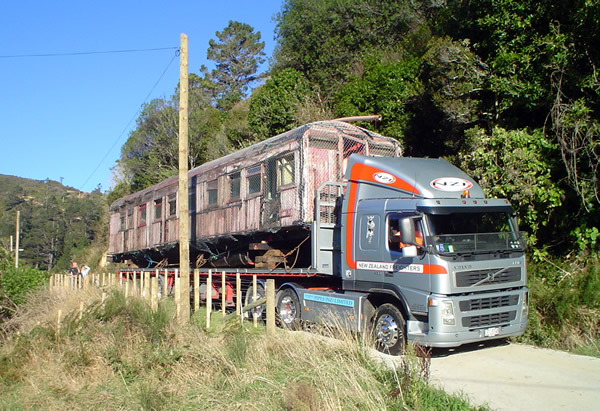
Sleeping carriage Aa1060 leaving the Akatarawa Valley on Friday 4 May 2007. Photo: Hugh McCracken.
The Trust has recently acquired former North Island Main Trunk sleeping carriage Aa1060 built at Petone Railway Workshops in 1909. Members of the Trust spent a considerable amount of time preparing the carriage for transport through April and May. It was transported from Akatarawa Valley to the Trust’s Maymorn railway station depot on Friday 4 May 2007.
Aa1060 was one of eight wooden-clad sleeping carriages built for the newly opened main trunk, sharing many proportions and design features with the first and second-class day cars of the day. Notably, these were the first type of sleeping carriage built by New Zealand Railways.
It is one of two surviving sleeping carriages, the other located at MoTaT, Auckland. They were replaced by later sleeping carriage designs; both saw non-revenue service in work trains, with only a few modifications made. Five compartments remain relatively intact in Aa1060, one compartment, one lavatory and one of the two water closets removed.
Most other early sleeping carriages were altered for suburban use for the latter part of their service. Aa1060 was initially preserved by Silver Stream Railway, but was on-sold privately in the late 1990s. It languished in a paddock in the Akatarawa Valley, Upper Hutt until being offered to the Rimutaka Incline Railway Heritage Trust in April 2007.
Protection from the elements
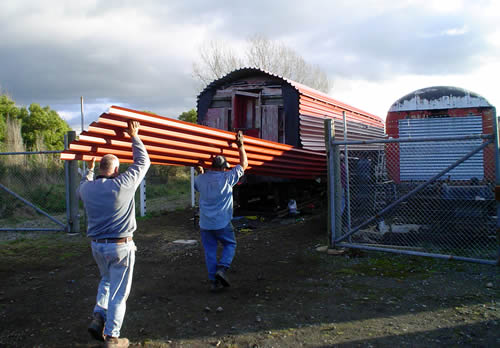
On Saturday 26 May the wooden sleeping carriage was clad with long-run Colorsteel, to protect it from the elements and vandalism. Peter Milburn, Colin Craddock and others carry the last 15.15m long sheet to the carriage. The cladding is a temporary solution, pending construction of the rail vehicle shed. Each sheet will eventually be cut into three 5.05m lengths and installed on the side walls. Photo: Hugh McCracken.
Preparation and transport
(All images Hugh McCracken, unless otherwise credited.)
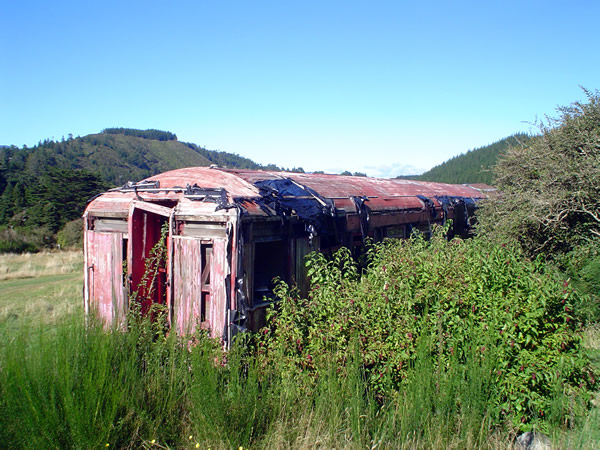
On 8 April 2007 we inspected sleeping carriage Aa1060, located on a farm in the Akatarawa Valley, Upper Hutt. Note the closed-in end, within which was located a lavatory and water closet. The other end of the carriage has a balcony, gates and steps.
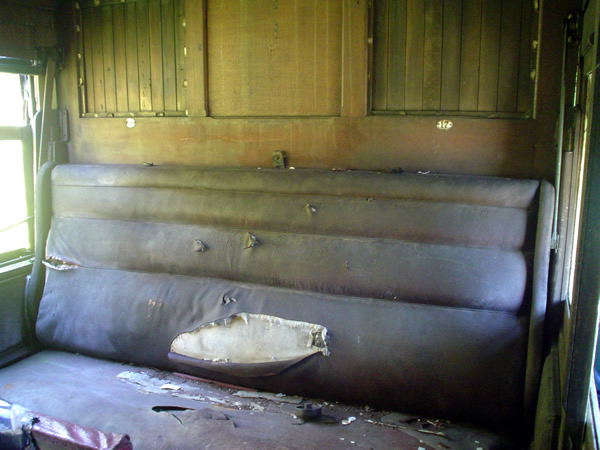
Surprisingly some of the sleeping compartments are still in remarkably good condition. Seats 16 and 17 still in place, the back squab tilts and lifts up to form the top sleeping bunk.
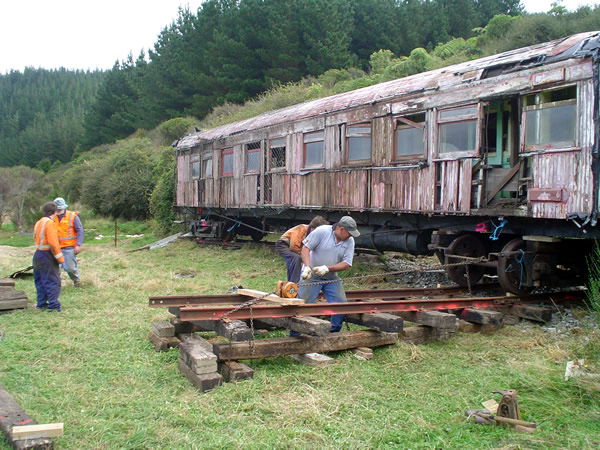
By ANZAC day, 25 April, we were full-swing into preparing the carriage for transport. King-pins of both bogies has been pulled, the carriage jacked and blocked up at each end. We turned one bogie through 90-degrees in order to pull the carriage out from its resting place — thus saving a condsiderable amount of excavation and/or crane work.
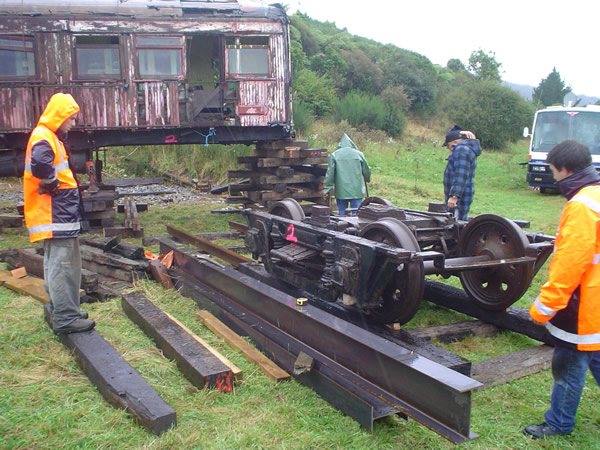
The following Saturday 28 April we continued to prepare the carriage for transport, extracting both bogies from underneath, and jacking the body up onto blocks. 1.3m clearance at the lowest point was required in order to roll a road trailer underneath.
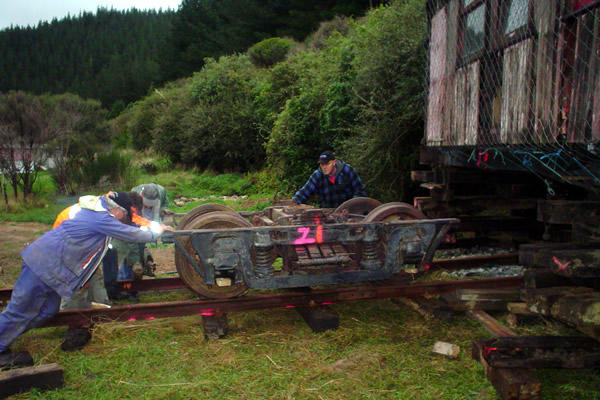
Late on Saturday 28 April we rolled the bogie out from the balcony end of the carriage.
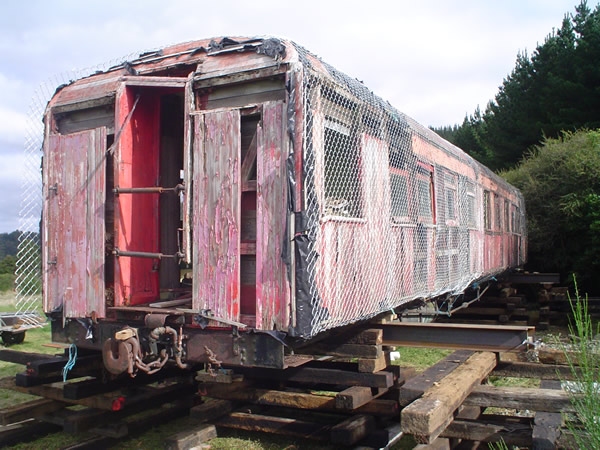
By the end of Sunday 29 April we had jacked the carriage body up to provide the required clearance, and installed 250UB31 beams ready for placing onto a road trailer. Bogies were trucked to Maymorn by Richard Hammond early the next week.
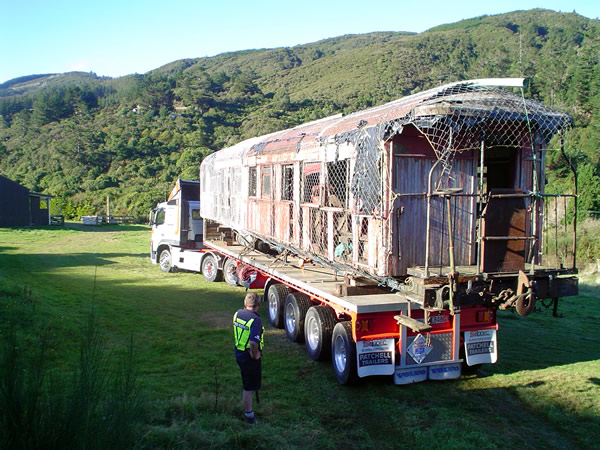
Transport was undertaken on Friday 4 May, a break in the weather appearing in what had otherwise been a very wet week. We were entirely dependent on firm ground conditions for this job! Aa1060 safely loaded onto a New Zealand Freighters quad-trailer.
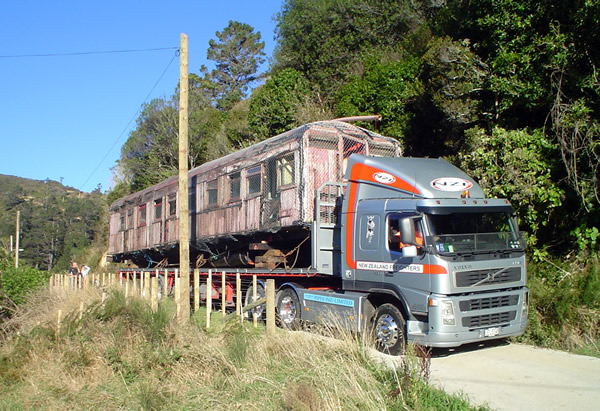
Access into the farm was extremely difficult, including tight clearances along the driveway.
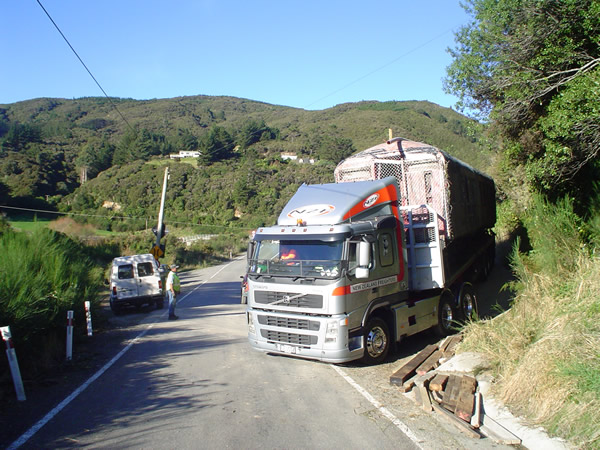
New Zealand Freighters truck negotiating the difficult accessway, with a concrete culvert opening (right) shored up with sleeper blocks and timber as a precaution.
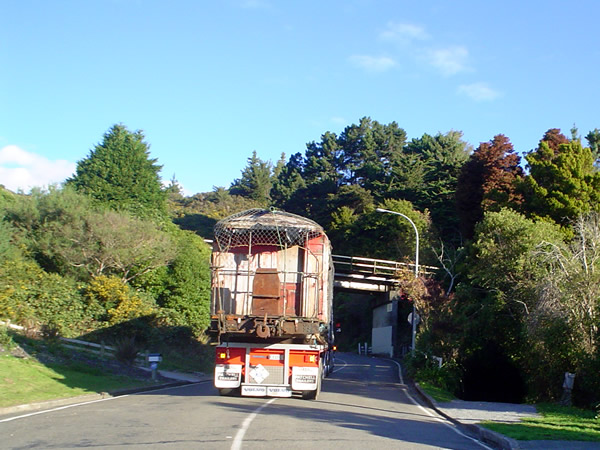
Having safely negotiated the Akatarawa Valley, the next challenge encountered was the Mangaroa hill. All road routes to Maymorn station have height constraints of one sort or another — the best available being 4.95m clearance under the Wellington-Masterton railway overbridge on the Mangaroa Hill Road. Unfortunately this route has steep gradients and tight curves...
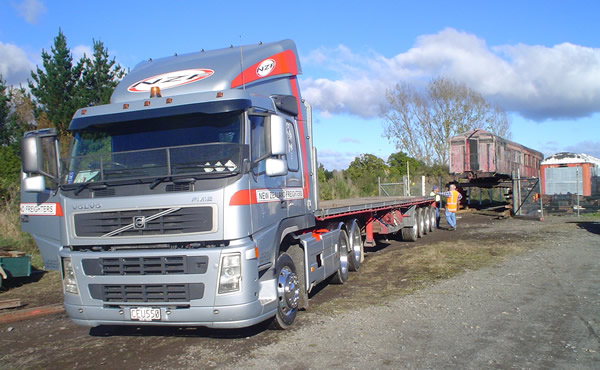
The carriage had been safely delivered to Maymorn late Friday afternoon, and was left on the road trailer overnight. This gave Trust members sufficient time to transfer the beams and sleepers and build the necessary pig-sties in order to extract the road trailer. By 10am Saturday morning the transport operation was completed, and the New Zealand Freighters truck headed for Auckland on more routine consignment work.
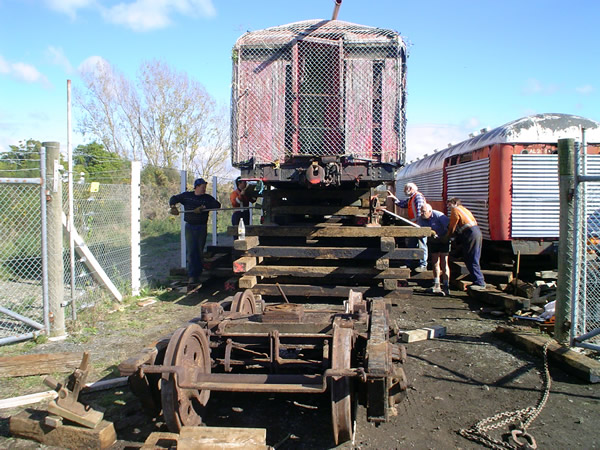
The rest of Saturday 5 May was spent lowering the carriage onto its bogies. The team are seen hard at work — from left to right: Hugh McCracken, Alex Maciver, Steve Porter, Peter Milburn and Ben Calcott. Colin Craddock took a short break to take this photo!
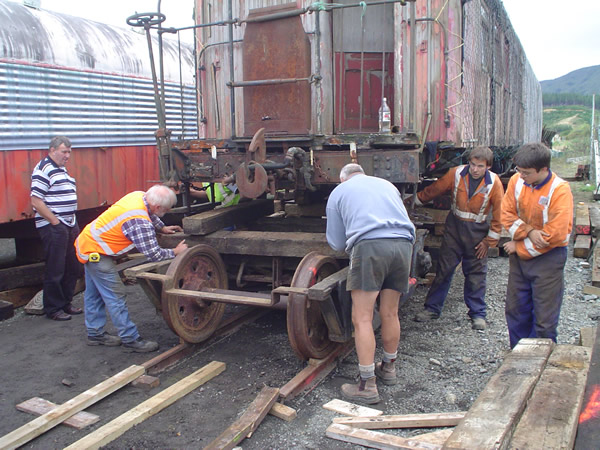
By late afternoon the carriage had been lowered sufficiently to roll in the bogie at the balcony end, as above. An hour or two later saw the second bogie rolled into place, the operation complete.
Thanks are due to all involved — the former owners for donating the carriage, New Zealand Freighters, Hammond Crane and Cartage Limited and Trust members who worked many hours to prepare and transport the carriage, and Rotary Upper Hutt for sponsoring the transport expenses.